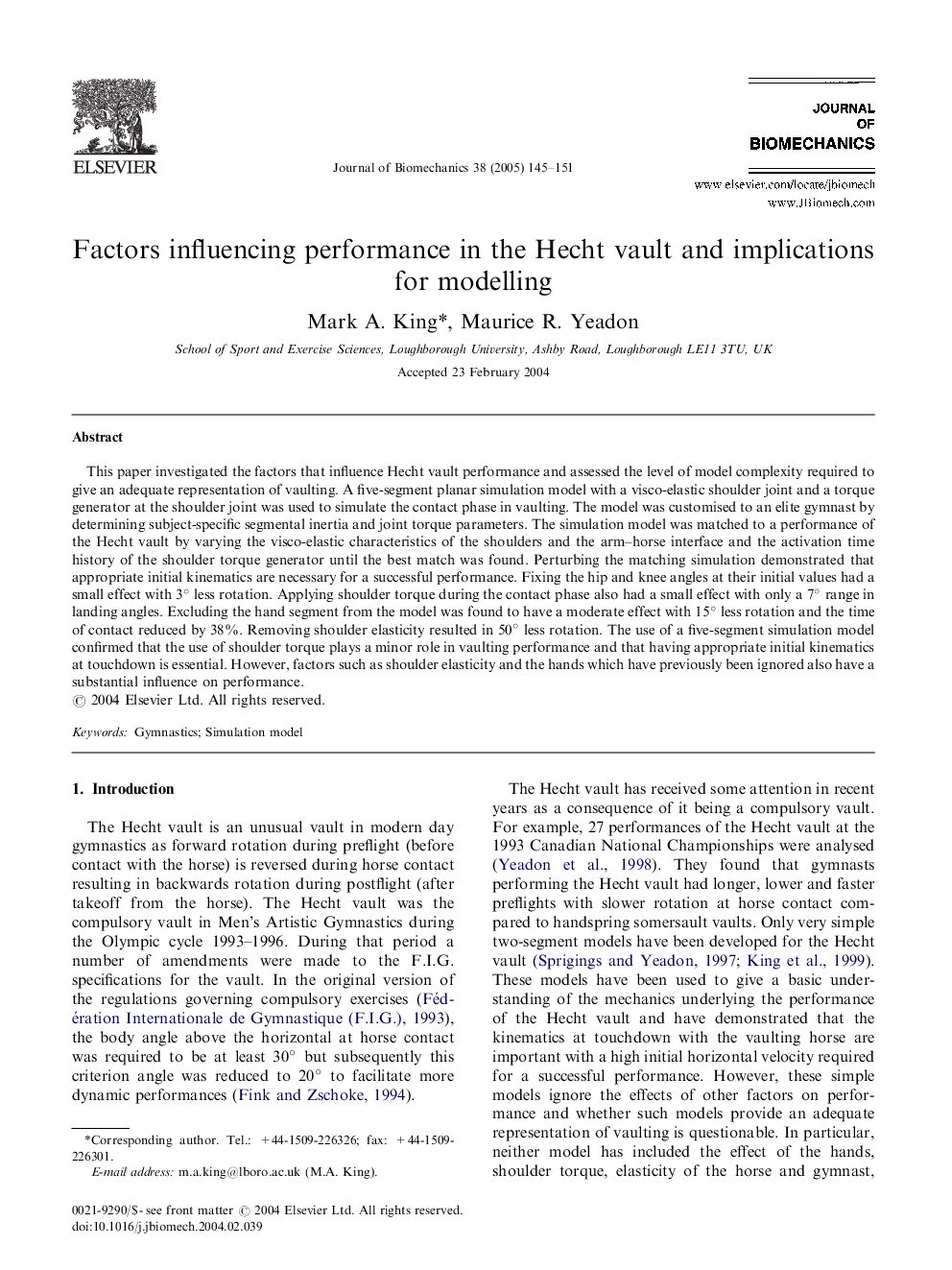| Article ID | Journal | Published Year | Pages | File Type |
|---|---|---|---|---|
| 10434567 | Journal of Biomechanics | 2005 | 7 Pages |
Abstract
This paper investigated the factors that influence Hecht vault performance and assessed the level of model complexity required to give an adequate representation of vaulting. A five-segment planar simulation model with a visco-elastic shoulder joint and a torque generator at the shoulder joint was used to simulate the contact phase in vaulting. The model was customised to an elite gymnast by determining subject-specific segmental inertia and joint torque parameters. The simulation model was matched to a performance of the Hecht vault by varying the visco-elastic characteristics of the shoulders and the arm-horse interface and the activation time history of the shoulder torque generator until the best match was found. Perturbing the matching simulation demonstrated that appropriate initial kinematics are necessary for a successful performance. Fixing the hip and knee angles at their initial values had a small effect with 3° less rotation. Applying shoulder torque during the contact phase also had a small effect with only a 7° range in landing angles. Excluding the hand segment from the model was found to have a moderate effect with 15° less rotation and the time of contact reduced by 38%. Removing shoulder elasticity resulted in 50° less rotation. The use of a five-segment simulation model confirmed that the use of shoulder torque plays a minor role in vaulting performance and that having appropriate initial kinematics at touchdown is essential. However, factors such as shoulder elasticity and the hands which have previously been ignored also have a substantial influence on performance.
Keywords
Related Topics
Physical Sciences and Engineering
Engineering
Biomedical Engineering
Authors
Mark A. King, Maurice R. Yeadon,
